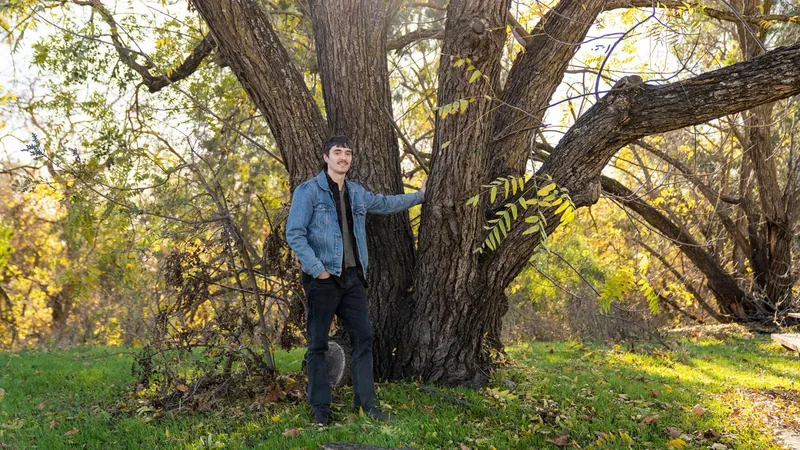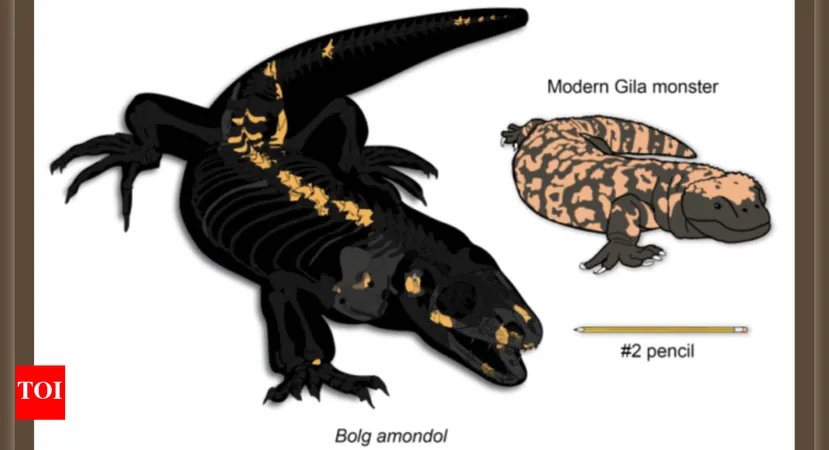
Unveiling the Fascinating Genetics of Alternating Sexes in Walnuts
2025-01-06
Author: John Tan
Introduction
In a remarkable breakthrough, biologists at the University of California, Davis, have uncovered the genetic mechanisms behind the intriguing phenomenon of alternating sexes in walnut trees. This research, published on January 3 in the prestigious journal Science, sheds light on a mechanism that has been stable in walnuts and their ancestors for nearly 40 million years, and it reveals parallels to sex determination mechanisms in humans and other animals.
Flowering Strategies in Walnut Trees
Flowering plants have developed various strategies to prevent self-pollination. While some species structure their flowers to make self-pollination difficult, others are characterized by separate male and female plants, or by timing their male and female flowers apart. However, trees within the family that includes walnuts, hickories, and pecans take this concept even further. Walnut trees exhibit a fascinating pattern by producing male flowers first in one season, then female flowers, or vice versa, with individual trees consistently falling into "male-first" or "female-first" categories. This unique reproductive strategy was noted as early as 1877 by Charles Darwin.
Significance of the Study
Jeff Groh, a graduate student in population biology at UC Davis and the lead author of the study, emphasized the significance of this phenomenon. "Walnuts and pecans exhibit temporal dimorphism where they alternate male and female flowering within a season," he said. While understood conceptually since the 1800s, the molecular underpinnings had remained elusive until now.
Research Methodology
The research team, which included Groh and his doctoral advisor, Professor Graham Coop, utilized data from UC Davis's walnut breeding program and observed native Northern California black walnut trees around their campus. By classifying these trees into male-first or female-first groups, they sequenced their genomes and identified specific genetic sequences associated with the trait.
Genetic Variants and Polymorphism
Interestingly, the study revealed two genetic variants linked to female-first or male-first flowering in walnuts. This DNA polymorphism appears in at least nine species of walnut, suggesting that this trait has been maintained over an exceptionally long time. "It’s quite unusual for a genetic variation to persist so consistently over millions of years," remarked Groh, highlighting the balance achieved between the two flowering types. When one type becomes more prevalent, the less common type gains a mating advantage, perpetuating a 50:50 equilibrium in the population and ensuring genetic diversity.
Comparative Analysis with Pecans
The research also found that pecans exhibit a similar balanced genetic polymorphism determining flowering order, but intriguingly, this arises from a different genomic region. The pecan polymorphism is estimated to be older, existing for over 50 million years.
Evolutionary Questions
This raises an exciting question: How did walnuts and pecans, two closely related species, evolve identical flowering mechanisms using different genetic components? One hypothesis posits that both trees' ancestors could have converged on similar evolutionary strategies. Alternatively, this temporal flowering system may have appeared even earlier, around 70 million years ago, only for the specific genetic methods to change over time.
Conclusion and Implications
Remarkably, this discovery mirrors the mechanisms behind animal sex chromosomes. Just as humans possess X and Y chromosomes that are maintained in balance, the walnut trees showcase a similar system, prompting Groh to comment, "There’s a clear parallel to a common mode of sex determination." This groundbreaking research not only enhances our understanding of plant reproductive strategies but also emphasizes the intricate connections between genetics and evolutionary biology. As we uncover more about the natural world, studies like these remind us of the beautiful complexities that govern life on Earth.





 Brasil (PT)
Brasil (PT)
 Canada (EN)
Canada (EN)
 Chile (ES)
Chile (ES)
 Česko (CS)
Česko (CS)
 대한민국 (KO)
대한민국 (KO)
 España (ES)
España (ES)
 France (FR)
France (FR)
 Hong Kong (EN)
Hong Kong (EN)
 Italia (IT)
Italia (IT)
 日本 (JA)
日本 (JA)
 Magyarország (HU)
Magyarország (HU)
 Norge (NO)
Norge (NO)
 Polska (PL)
Polska (PL)
 Schweiz (DE)
Schweiz (DE)
 Singapore (EN)
Singapore (EN)
 Sverige (SV)
Sverige (SV)
 Suomi (FI)
Suomi (FI)
 Türkiye (TR)
Türkiye (TR)
 الإمارات العربية المتحدة (AR)
الإمارات العربية المتحدة (AR)